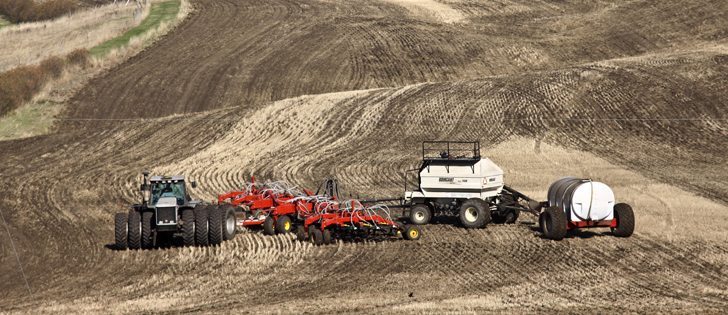The recently released 2011 agricultural census shows that the number of farms in Canada has decreased by 10.3 percent, while the average farm size has increased by 6.9 percent.
This doesn’t mean that family farm operators are getting out and leaving farming to corporations with little interest in sustaining the land and the communities that have been a vital part of western Canadian agriculture since the 1800s.
Rather, it means that families are consolidating to take advantage of economies of scale, a necessity that has resulted from the competitive and protective environment of global agriculture.
Read Also

Higher farmland taxes for investors could solve two problems
The highest education and health care land tax would be for landlords, including investment companies, with no family ties to the land.
The term “corporate farming” is often used in a derogatory fashion by those who don’t understand these realities. However, farmers must be astute businesspeople if they are to succeed in this current agricultural climate, and incorporation is a good way to address tax and succession planning.
Family corporations accounted for 87.8 percent of all farm corporations in 2011, according to the census report.
These families live on their farms and contribute to their communities. They have a vested concern for the soil, the ground water and the surface water that support their livelihoods.
They also tend to buy locally, which means support for local agri-product retailers, seed dealers, equipment dealers, fuel suppliers and construction companies.
They also make family purchases at the local level, including groceries, clothing and household items.
This adds up to local jobs on which rural sustainability is based.
Reading between the lines of the census, however, one can see that this sustainability is being threatened.
The report indicates that slightly more than 48 percent of farm operators are older than 55, compared with slightly more than 40 percent in 2006 and 32 percent in 1991. The farming population is growing older because fewer young people are taking up the call of the land.
Farm and rural depopulation is an unfortunate reality, and Keystone Agricultural Producers is working to address it.
We actively engage young farmers, inviting them to join committees and participate in KAP’s decision-making process. We reach out to them in their agricultural studies at the University of Manitoba and Assiniboine Community College.
Most importantly, we create policies and lobby government for programs that will benefit young farmers.
I would be remiss if I didn’t say that governments listen and recognize the importance of this new generation of farmers.
Both provincial and federal govern
ments have responded with a variety of programming.
Manitoba Agriculture, through the Manitoba Agricultural Services Corp., has created the Bridging Generations Initiative that provides financing options that position young farmers to succeed the retiring generation.
Federal programs are also aimed at young farmers, including low-cost loan options through Farm Credit Canada.
Most recently, a new Young Farmer Loan was announced to offer added support for young farmers who need to buy land and buildings.
The synonym for farmer is “eternal optimist,” and as a farmer, I am optimistic that all of our efforts, both current and future, will help young people come back to the farms.
I am equally optimistic that KAP and other organizations like ours across the country will succeed in busting the myth that farm corporations are owned by outside interests and not local farm families.
Doug Chorney is a farmer from East Selkirk, Man., and president of Keystone Agricultural Producers.















